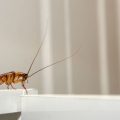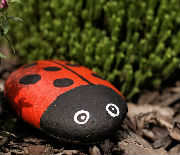
If you need to know anything about how pests can reduce the value of your home or, more generally about potential property damage caused by pests, this article is for you.
Whether you’re buying, selling, renting, or dealing with property in any way, it’s important to understand how pests lower property value and the actions you can take to protect yours.
Explore the most common pests, how they affect property value, and what to do right here.
Table of Contents
How pests can impact your home’s value
The value of your house can drop dramatically due to a pest infestation—typically by 10% to 20%. Woodworms and rodents, among other pests, can cause damage to your home’s structure that will need expensive repairs.
Reduced offers or a longer time on the market are common results of buyers’ reluctance to invest in a house with obvious pest damage. Pest damage can occasionally make it more difficult to have a mortgage approved, which reduces the number of possible purchasers.
Buyer confidence may also be damaged by the appearance of neglect, which is reinforced by the presence of pests or proof of previous infestations. Visible damage or the requirement for disclosures during the sale process can reduce the ultimate sale price even after the pests have been removed.
Regular pest inspections, timely repairs, and expert documentation of treatment can all help preserve the value of your house and reassure potential purchasers while protecting your investment.
Pests that can damage your home
If you’ve found pests at home or a property you own or manage, you need to take action as soon as possible if you want to minimise the harm they can cause.
Pest damage is wide-ranging and depends on the type of pest infestation you have on your hands. From fabric, fixtures, and fittings to actual structural damage, it’s risky to let any pests make their home in your property for very long.
1) Rats and Mice
Mice and rats in walls or under floorboards are problems for all kinds of reasons. First of all, because they like to nest. Rats’ nests in homes are often created by the little critters clearing a space for themselves in your insulation or drywall.
Second, they eat. And they eat a lot. A variety of fabrics, accessible food in the kitchen, wood, paper, books, and even electrical wires!
Not only is this a cause of potentially a whole slew of problems, but they also leave urine and faeces behind themselves on their hunts. This can mean they leave diseases and other contaminants behind them.
- Damage caused by rats and mice can be varied and extensive
- Structural damage can result from rodent nesting behaviour
- Electrical wire and gas pipe damage (and fire risk) is common with mice or rats
- Nibbling of food and droppings spread disease
- Furniture and clothing can be chewed and holed
Learn What Are The Signs of a Mouse Infestation
2) Squirrels
For many people, squirrels are cute little creatures you encounter in your local park. For those unlucky enough to have them infest their home, though, they’re a pest that can cause serious damage.
You’ll most commonly find squirrels in the loft, hiding in out-of-the-way corners and ripping up the insulation to build nests.
But the main aspect of squirrel damage is caused by their chewing behaviour. Their teeth grow constantly, and they need to regularly gnaw on things to sharpen and stop the growth. This means anything in your house that isn’t incredibly tough is safe!
- Squirrels in attics damage insulation, wood, and more
- They breed very quickly, meaning it’s vital to stop an infestation fast
- Squirrels in roof spaces can access wiring and chew on it, leading to electrical and fire damage
- Plastic PVC piping of guttering, drainage channels, and the like can also be compromised, leading to water damage
- Roofing shingles are a particular favourite, also compromising the structure and waterproofing of your property
3) Ants
Ants are interesting creatures, highly organised and varied in the damage they can do to your home.
Different species of ants cause different problems. For example, black garden ants won’t deliberately cause structural damage, only widening existing cracks to gain entry. But species like carpet ants will. Pharaoh ants carry a kind of bacteria that can carry diseases.
- Carpenter ants cause wood floor damage not by eating it but by making space for themselves – this can happen with rotting wood outside but also under floorboards and in wooden pillars
- In fact, Carpenter ants damage wood so severely that they can affect a property’s structural integrity
- Signs of carpenter ants in your house are often easy to spot – they don’t hide from you. They’re often most active at night.
- Carpet ants and other species create nests, which can also damage your property as they tunnel through any wooden parts of the structure like termites
- Most species of ants are attracted to homes by food being left out or by the level of humidity they prefer, often a problem in UK homes
Check also: How to Get Rid of Ants Invasion in Your Home?
4) Woodworms
Woodworms are one of the most pernicious types of pest you can find in UK homes. Woodworm damage, as you might expect, is heavily weighted towards the wooden parts of your property. This can be a serious problem. Because once they’ve started feeding, woodworms don’t stop.
They make one tunnel, then they make another, and soon you find yourself needing to move out of the property until its structural integrity can be checked by an expert.
- Woodworms like to eat wood, including load-bearing parts of properties such as structural timber and rafters
- Damaged structural components can collapse, causing serious harm and damage
- Woodworms in floorboards are common, but it can be difficult to spot signs like exit boreholes until it’s too late
- Leaving woodworms untreated can be disastrous as they compromise the strength of any timber they’re in
- Woodworm treatment needs to be fast-acting but should be left to the professionals as there are different species that burrow at different depths and have different best approaches
Check also: Most Common Wood Boring Insects in the UK
5) Carpet beetles
Carpet beetles in the UK can be found in large numbers of homes. Don’t let the name fool you, though. They actually like to feed on all kinds of fabric – rugs, sofas, and clothes as well as carpeting. Plus, no leather items like bookbindings, furniture, or animal products like furs or feathers are safe.
- Carpet beetle damage affects carpets, silk, wool, leather, curtains, and other natural materials
- With furniture, carpet beetles can cause lasting damage that’s expensive or impossible to repair
- Even photographs and paintings can be targets
- Many UK rental and insurance agreements don’t cover carpet beetles
- Carpet beetle treatment needs to be handled with care if you want to prevent damaging the very items you are trying to protect
Check also: How to Get Rid of Carpet Beetles
Does home insurance cover pest control?
Many people assume that their homeowner insurance policy will automatically cover all kinds of pest damage. Unfortunately, this isn’t the case.
In fact, when it comes to pest control, home insurance doesn’t usually cover the cost. However, there are occasions when yours might cover some part of it. The type of pest you have doesn’t normally matter though. This means general pest questions like “is rodent damage covered by homeowners insurance?” are likely to be answered “no”.
But even if you do have a rodent infestation, you might actually be partially covered. The two terms to bear in mind when considering whether home insurance covers pest control are “preventable damage” and “unexpected damage”.
Preventable damage is the kind of thing your insurer will say is the fault of the owner or tenant for the poor upkeep of the property. It happens over a longer period of time – something like an infestation with long-term visible signs that no action was taken to resolve.
Unexpected damage normally relates to things like storms. But it might – might – cover damage caused by pest-related problems. For instance, a fire caused by a rat chewing through electrical cables. That’s probably not going to be much consolation to you, though.
Are you dealing with a pest infestation?
You don't have to be alone in the battle against pests. Hire a professional pest expert!
Call usPest control advice when buying a new home
All of this means that when you buy or start renting a new home, pest inspection should be one of the first things on your list of things to do.
Whether a new build or a property that’s been serially occupied or left long-empty, pest inspection for a new home is always a good idea. This should include all parts of the building’s interior and exterior and is always best accomplished by professionals.
If any pests are found, the simplest new home pest control measures you should expect are for webs and nests to be removed and for any entry points – the small gaps and cracks that pests enter through – to be sealed.
Takeaways
- The damage different pests can cause to a property is wide-ranging
- Structural damage is most common with woodworms, rodents, and some species of ants
- Other types of pests can do all kinds of other damage and spread disease
- Home insurance doesn’t usually cover pest control or most pest-related damage
- Pest inspection and control should be one of the first things you do before buying or moving into a new home
***
Does that cover your property pest damage questions? Comment below to get an expert answer to your questions about how pests decrease the value of your home – and what to do about it!










Leave a Reply